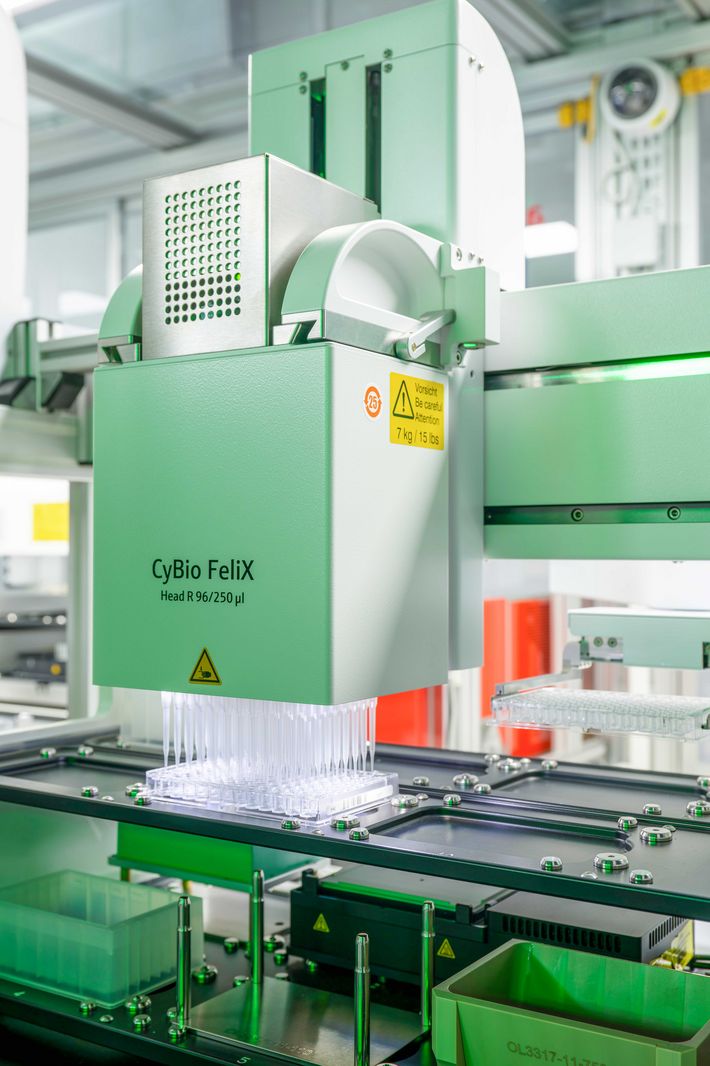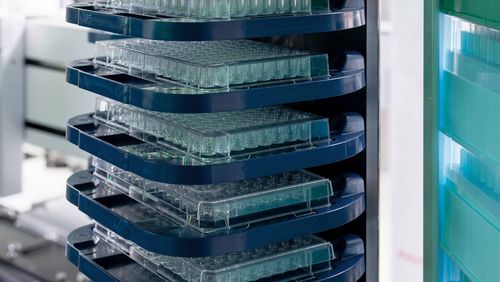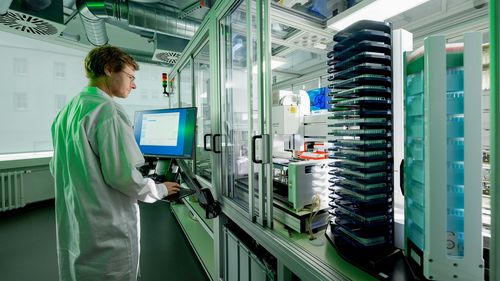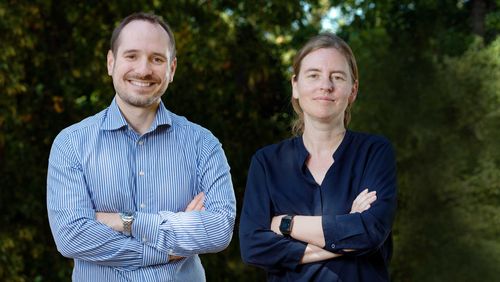
Next-level search for active compounds
After demonstrating for the first time that ancient dental calculus can be used to produce bacterial compounds, researchers in the palaeobiotechnology project are now aiming to multiply their research output—and have developed diverse methods and platforms for automating the complex processes involved.
The palaeobiotechnology project in Jena is progressing in leaps and bounds. Two years ago, researchers led by chemist Pierre Stallforth and biomolecular archaeologist Christina Warinner demonstrated that their idea works: in a widely acclaimed study published in top-tier journal Science, they showed for the first time that it’s possible to recreate natural products from the dental calculus of early humans—natural products produced by bacteria up to 100 000 years ago.
For this groundbreaking work, the researchers applied customised methods to sequence fragments of genetic material. They assembled these fragments to reconstruct the genomes of numerous bacterial species, which in turn were used to reconstruct a blueprint for enzymes that produce natural products. And after these genes were inserted into living bacteria, they did indeed yield the previously unknown bacterial compounds.
“When people hear we’re working with ancient genetic material, they often think it’s difficult to find enough,” Christina Warinner says. “But that’s not the case. Quite the opposite: we have an enormous amount of data—so much, that we’ll never be able to test it all.” To study as many potential candidates as possible, and to identify the most promising data, it’s essential that the team automate the complex tasks involved in seeking and producing these prehistoric compounds.

Three automation steps
This work was the top priority for the researchers last year and—in simple terms—they created three automation steps to realise their objective. The first is to extract and sequence genetic material from the samples. “Robots are already used to run most of these tasks,” Warinner explains, “which has increased and standardised our throughput.”
In a second step, Pierre Stallforth continues, the objective is to gain as much information as possible from these data. To achieve this, the researchers have developed various software tools and pipelines to automate data analysis; these programmes identify, for instance, DNA sequences that can potentially encode the information for the generation of antimicrobial compounds.
Third and last, the Leibniz Institute for Natural Product Research and Infection Biology has built a new, one-of-a-kind automation platform for creating molecules from the newly discovered sequences and for standardised, high-throughput testing of the new compounds—to determine their antibiotic or antifungal effect, for example.
Interdisciplinary collaboration
“We’ve united experts from various disciplines—from chemists to programmers—with the aim of developing the best possible tools,” Warinner says. In particular, the aim is to learn what the most important properties for potential natural products are and how they can find systematic processes for filtering out promising sequences. Other open questions are centred around the prediction of biological activities of natural products.
“Answering these questions and developing the necessary tools takes a lot of time,” Pierre Stallforth explains. “But once things are up and running smoothly and reliably, the platform will help us to extract an enormous amount of information from our data.” Here, the long-term funding from the Werner Siemens Foundation is worth its weight in gold. “Many other funding instruments are limited to two- or three-year terms—and it’s simply impossible to develop foundational platforms like this in such a short time span.”
Samples from across the globe
Alongside these developments, work on the samples of calcified dental plaque continued. The researchers recorded data from an entire series of Neanderthal skeletons, thus significantly expanding their archaeological collection of genetic material. “At the start, most of our samples came from Europe,” Christina Warinner explains. “But now we have new projects in various locations—in Asia, for example, as well as a major study in Oceania.” The long-term aim is to obtain data from as many ancient individuals as possible, enabling the team to examine global patterns in the biodiversity of ancient dental calculus.
The palaeobiotechnology project also has good news to report in professional matters: Christina Warinner was promoted to full professor with tenure at Harvard University. This new and prestigious position means that both she and Pierre Stallforth have permanent academic positions. “It’s wonderful,” Warinner says. “Now we both have a solid basis to further establish and expand on our work in palaeobiotechnology.”



